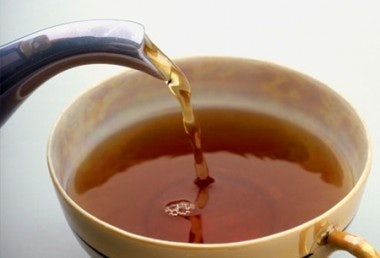Assam And Darjeeling Teas Being Marketed As Luxury Goods#

India is looking to convince more Chinese tea drinkers to give black tea a shot
How can the second-largest producer of tea in the world sell its products to the largest producer, while promoting its tea as high-end and appealing to a growing number of worldly middle-class consumers? These are some of the questions facing Indian tea growers, who are hoping to boost exports to their eastern neighbor and take advantage of a steadily growing thirst for non-Chinese premium tea. This weekend, the Indian government made its first major foray in this field, inviting some of China's top tea retailers and importers to a tasting in Beijing of premium Assam and Darjeeling teas, both of which are currently being positioned in the market as "luxury" teas.
While the effort was, according to The Hindu, seen as welcome by the retailers and importers, it might be too little too late. As rivals in the tea trade, such as Sri Lanka, look to corner the Chinese import market for black tea in particular, Indian producers may have a difficult road ahead. From The Hindu:
“China has its own tea culture. Though Chinese have their own taste for green tea and red tea, this is our way to show tea is part of our culture, and that the history of our tea is a global one,'' [Arun Kumar Sahu, political and cultural counsellor at the Indian Embassy in Beijing] said.
“We have a rich history of Indian tea and I think our brands, like Darjeeling, are a high-end product,” he said. “I will not be surprised if in a few years' time it will be the high-end sector of Chinese society from where demand for Indian tea will come.”
Five years ago, Siliguri-based Lochan Tea became one of the first Indian companies to enter into a commercial contract with a Chinese firm to sell Darjeeling tea in China. Makaibari Royal Tea of Darjeeling has also begun selling its products here. Marco Wu, a representative of the company, said five years on, the market for Indian teas was “still small, but growing.”
“In the few years we have been here, the demand has grown, but we are still talking about very small numbers,” he said. In China, green tea is the most widely consumed. The luxury market, which India is targeting, is more diverse, but very price-conscious, Chinese retailers say. Tea is a popular gift in Chinese culture, but the price-tag and brand name count.
“The luxury market is well defined, so it will be difficult for Indian brands to enter here,” said one Chinese representative at the Friday's event. Ding Ding, a representative of the Mantangxiang Tea Group, one of Beijing's biggest retailers and sellers of foreign teas, said Indian tea had some advantages, in quality and taste, but faced a tough battle to garner a foothold in China.
According to attendees of India's tea event this weekend, it's not green tea-heavy tea exporters (like Japan and Korea) that India should be emulating in its attempt to break into the high-end tea market in China, but its nearby tea-growing rival Sri Lanka. Currently, Sri Lankan brands "far outsell" Indian Darjeeling and Assam teas in China, according to Ding Ding, with Sri Lankan companies being far more active in terms of outreach and promotion. Even though Sri Lanka's total tea production is less than half of India's, the country long held the title of world's largest net exporter until finally being edged out by Kenya last year. Since 2009, Sri Lanka tea exporters have intensified their focus on the massive Chinese market, first targeting Hong Kong and the Pearl River Delta region, then spreading further inland.
For India and Indian tea exporters, the challenge remains how to better enter the market (via a stronger presence in Hong Kong or south China, or online), position their product as a luxury good (through promotional events, product tie-ins and social media), and convince Chinese green tea drinkers to give Indian Assam or Darjeeling a chance.